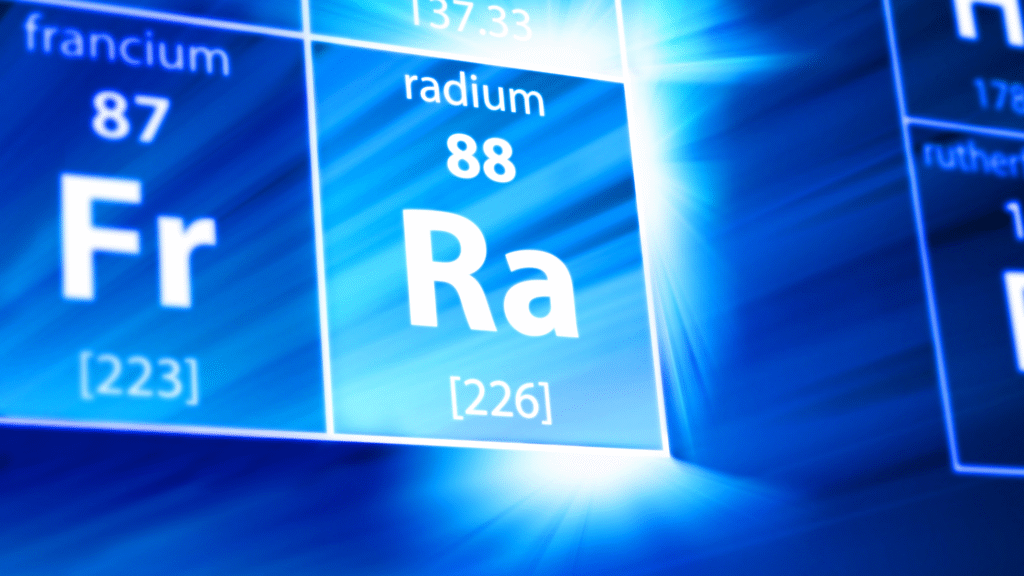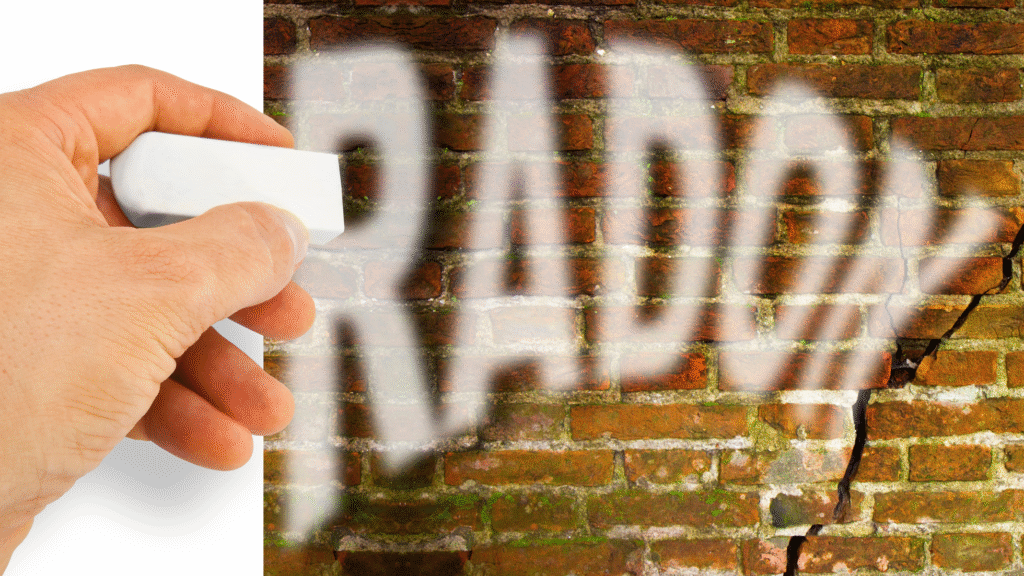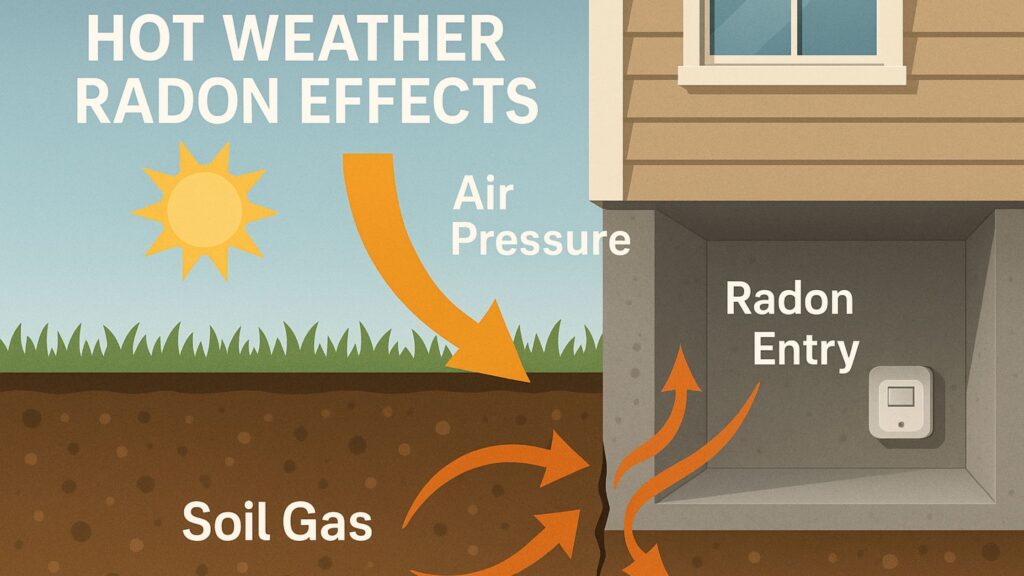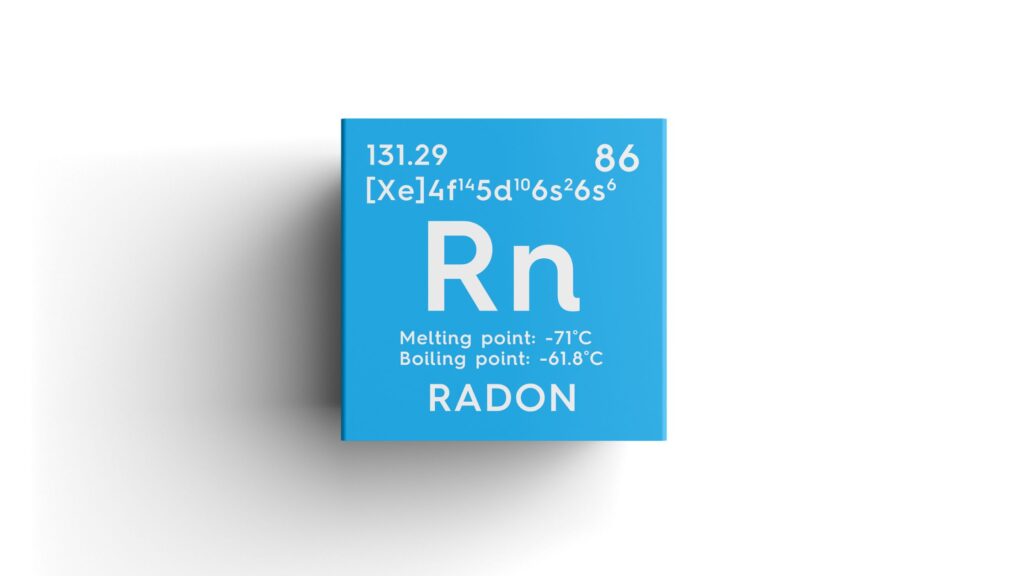Radioactive elements are part of our natural environment, yet some pose serious risks, especially when they enter our homes. Among them, radon and radium are commonly misunderstood. While they are chemically related, the difference between radon and radium is significant, especially when it comes to indoor air quality and health risks.
Understanding how each of these elements behaves, where they originate, and what dangers they present allows homeowners to take informed, preventive steps. This article explores both radon and radium in depth, explains how they affect your home, and outlines what you can do to protect your family.

What Is Radium?
Radium is a naturally radioactive metallic element found in trace amounts within the Earth’s crust. It forms as part of the uranium decay chain and has a silvery appearance when freshly cut, though it quickly oxidizes in air.
Natural Origins
Radium exists underground, particularly in rock and soil that also contain uranium and thorium. It is not typically hazardous on its own unless it is concentrated or ingested. Over thousands of years, radium undergoes radioactive decay, during which it transforms into several elements, most notably, radon.
Historical Uses and Hazards
In the early 1900s, radium was widely used in glow-in-the-dark paints, health tonics, and even cosmetics, before its health dangers were fully understood. Workers in radium dial factories—later known as the “Radium Girls”—suffered severe radiation poisoning, prompting tighter regulations.
Today, radium has limited applications, mainly in scientific research. Nonetheless, its significance in environmental health persists because of its decay into radon.
What Is Radon?
Radon is a naturally occurring radioactive gas. It’s invisible, odorless, and tasteless—meaning it cannot be detected without specific testing. It is the most dangerous product of radium decay and presents a serious health concern when it accumulates indoors.
How Radon Is Formed
As radium breaks down deep within soil and rock, it releases radon gas. This gas rises through pores, cracks, and spaces in the ground. Outdoors, radon quickly disperses and poses minimal risk. Indoors, however, radon can accumulate to dangerous concentrations—especially in lower levels like basements and crawl spaces.
Why Radon Is a Health Threat
The danger of radon lies in inhalation. When people breathe radon-contaminated air over long periods, radioactive particles become lodged in their lungs. These particles release alpha radiation, which damages lung tissue and significantly increases the risk of lung cancer. According to the EPA, radon causes more than 21,000 lung cancer deaths each year in the United States alone.

The Difference Between Radon and Radium
Although related, radon and radium differ in important ways. The difference between radon and radium lies in their physical properties, movement, and health implications.
Scientific Distinctions
| Property | Radium | Radon |
| Element Type | Radioactive metal | Radioactive noble gas |
| State at Room Temp | Solid | Gas |
| Detectability | Requires lab analysis | Detected via indoor air testing |
| Source | Found in uranium-rich soil and rock | Forms from decaying radium |
| Health Risk Pathway | Ingestion or direct contact | Inhalation of contaminated air |
| Risk Indoors | Very low | High if not mitigated |
Impact on Residential Environments
Radium stays in the ground and rarely enters the home directly. In contrast, radon gas travels upward from the soil and can seep into homes through:
- Cracks in foundations
- Gaps around pipes and wiring
- Sump pump openings
- Wall and floor joints
Even newly built, energy-efficient homes are not immune, since tight seals can trap radon inside. Therefore, regular testing and mitigation are key parts of responsible homeownership.
Why These Elements Matter in Home Safety
1) Health Effects from Exposure
The primary concern is chronic radon exposure, which can go unnoticed for years. Long-term inhalation increases the likelihood of:
- Lung cancer (especially in smokers)
- Respiratory complications
- Reduced lung function in sensitive individuals (such as children or the elderly)
Radium, while less immediately dangerous in residential settings, remains a concern for well water contamination and properties built on radioactive soils.
2) Preventive Actions for Homeowners
To safeguard your family, consider the following steps:
- Test your home for radon at least every two years using an EPA-approved kit or professional service.
- Seal entry points in your basement or slab foundation to reduce radon infiltration.
- Install a radon mitigation system if levels are above 4.0 pCi/L. These systems use fans and venting pipes to safely direct radon outside.
- Maintain your system by checking fan operation and retesting every few years.
- Check your water source, especially if you rely on a private well, as radium and radon can dissolve in groundwater.
These steps are cost-effective and vital for long-term health and peace of mind.

Conclusion
Radium and radon are closely linked by nature, but their impact on your health is vastly different. Radium stays buried underground, while radon enters your home silently and dangerously. The difference between radon and radium is not just scientific—it’s practical, especially when considering indoor air quality and health protection.
Protecting your home starts with awareness. If you’ve never tested for radon or suspect elevated levels, don’t delay. The team at DSM Radon offers certified testing, expert analysis, and proven mitigation systems tailored to your home’s unique needs.
Frequently Asked Questions
1. Which poses a greater risk in homes, radon or radium?
Radon poses a greater risk because it is a gas that can easily enter living spaces and is inhaled. Radium typically stays underground and is less likely to affect indoor environments unless it contaminates well water.
2. How do I know if my home has high radon levels?
You can test your home using a DIY test kit or by hiring a licensed radon professional. Homes with levels above 4.0 pCi/L should install a mitigation system.
3. Can radon affect my health even if I don’t have symptoms?
Yes. Radon exposure has no immediate symptoms, but long-term exposure can lead to serious health problems, including lung cancer.
4. Is it expensive to reduce radon in a home?
Not necessarily. Most radon mitigation systems cost between $800 and $1,500, and they are highly effective in lowering indoor radon levels.





